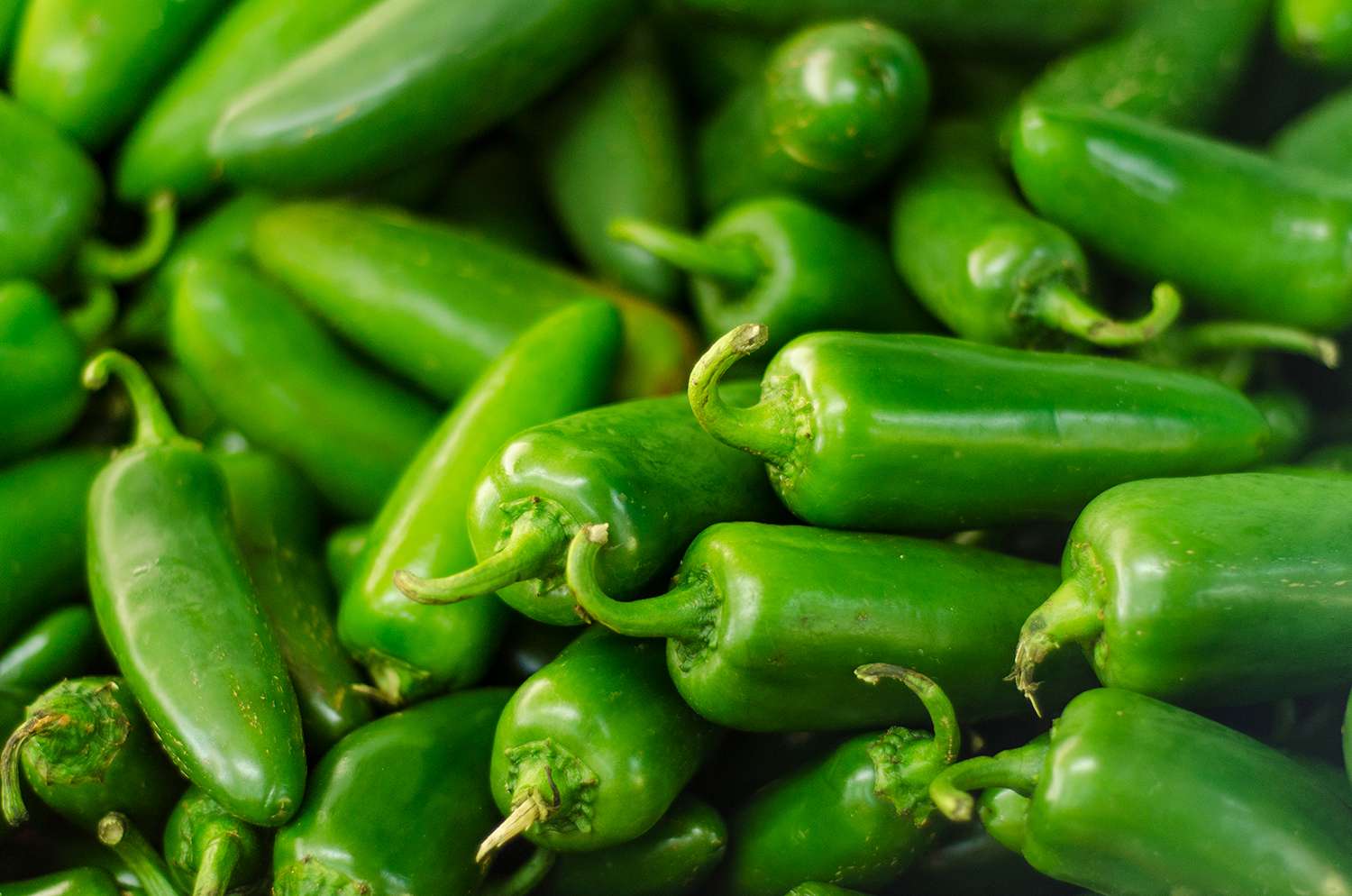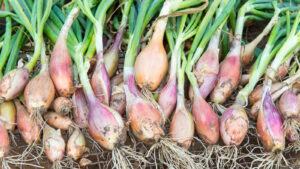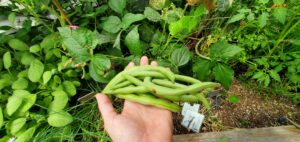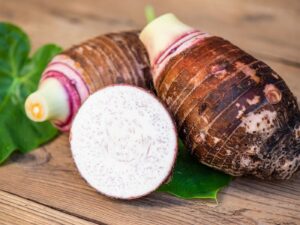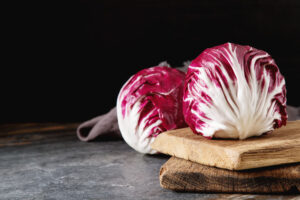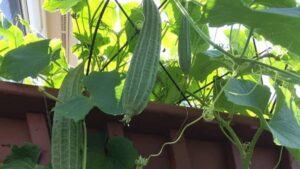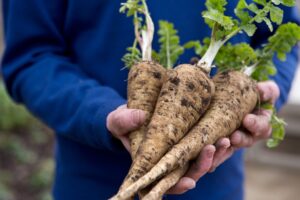How to Grow and Use Jalapeño Peppers: A Complete Guide
Are you looking to add some spice to your culinary adventures? Growing your own jalapeño peppers can be a rewarding experience that provides you with fresh, flavorful chilies right at your fingertips. Whether you have a spacious garden, a small balcony for containers, or just a sunny windowsill, jalapeños can thrive in various environments with the right care. This comprehensive guide will walk you through everything you need to know about growing, harvesting, and using these popular peppers in your kitchen.
Why Grow Your Own Jalapeños?
Jalapeños (Capsicum annuum) are one of the most popular chili peppers in the United States, prized for their moderate heat level and versatility in cooking. According to the USDA, jalapeños rank as one of the top specialty crops in the US market, with consumption steadily increasing over the past decade. Growing your own ensures you’ll have access to the freshest peppers possible while also saving money.
The US jalapeño market has seen impressive growth, with domestic production supplementing imports from Mexico. According to the USDA Agricultural Marketing Service, jalapeños are among the most commonly grown peppers by home gardeners across the country.
Getting Started: Essential Growing Requirements
Before planting your first jalapeño, it’s important to understand what these plants need to thrive:
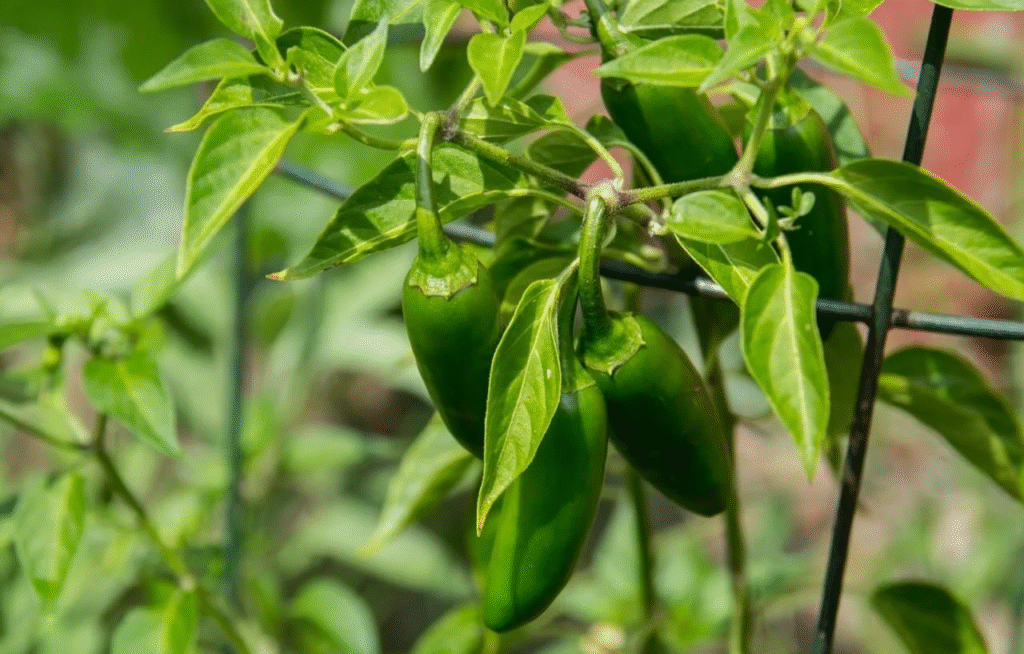
Climate and Growing Conditions
Jalapeños are warm-season crops that perform best in these conditions:
| Requirement | Optimal Range | Notes |
|---|---|---|
| Temperature | 70-85°F (21-29°C) | Growth slows below 55°F (13°C) |
| Sunlight | 6-8 hours daily | Full sun is preferable |
| Soil pH | 6.0-6.8 | Slightly acidic to neutral |
| Water | Moderate, consistent | 1-2 inches weekly |
| Growing Season | 70-90 days | From transplant to first harvest |
| Hardiness Zone | USDA Zones 8-11 | Grow as annuals in cooler zones |
When to Plant Jalapeños
Timing is crucial for successful jalapeño growth:
- Northern US: Start seeds indoors 8-10 weeks before the last spring frost
- Southern US: Direct sow after soil temperatures reach 65°F (18°C)
- Year-round growing: Possible in USDA zones 10-11 with protection from extreme heat
How to Grow Jalapeños from Seed
Starting jalapeños from seed gives you access to more varieties and can be more economical. Here’s how to ensure success:
Indoor Seed Starting Process
- Select quality seeds: Purchase from reputable suppliers or save from organic peppers
- Prepare containers: Use seed-starting trays with drainage holes
- Use proper medium: Select a sterile seed-starting mix
- Planting depth: Sow seeds ¼ inch deep
- Maintain moisture: Keep soil consistently moist but not soggy
- Provide warmth: Maintain soil temperature between 70-80°F (21-27°C) using a heat mat if necessary
- Light requirements: Provide 14-16 hours of light once seedlings emerge
- Hardening off: Gradually expose seedlings to outdoor conditions over 7-10 days before transplanting
According to research from USDA’s Agricultural Research Service, jalapeño seeds typically germinate within 7-14 days under optimal conditions.
Transplanting Seedlings
When your seedlings have developed 2-3 sets of true leaves and all danger of frost has passed:
- Choose a sunny location with well-draining soil
- Space plants 12-18 inches apart in rows 24-36 inches apart
- Dig holes slightly larger than the root ball
- Place plants at the same depth they were growing in containers
- Water thoroughly after planting
- Apply a layer of organic mulch to retain moisture and suppress weeds
Growing Jalapeños in Garden Beds
Jalapeños thrive in garden settings where their roots have room to expand. Follow these guidelines for garden success:
Site Selection and Preparation
Select a location that receives at least 6 hours of direct sunlight daily. Prepare the soil by incorporating 2-3 inches of compost to improve fertility and drainage. Jalapeños prefer slightly acidic to neutral soil (pH 6.0-6.8).
Ongoing Care for Garden Jalapeños
Watering Techniques
Water deeply but infrequently to encourage deep root development. Aim for 1-2 inches of water per week, adjusting based on rainfall and temperature. Drip irrigation is ideal as it keeps foliage dry, reducing disease risk.
Fertilization Schedule
- At planting: Mix in balanced organic fertilizer (like 5-5-5)
- Early growth: Apply nitrogen-rich fertilizer when plants are 6 inches tall
- Flowering stage: Switch to a phosphorus-rich fertilizer (like 5-10-10)
- During fruiting: Light applications of balanced fertilizer every 4-6 weeks
Common Pests and Diseases
Monitor regularly for these common issues:
- Aphids: Treat with insecticidal soap or a strong water spray
- Spider mites: Increase humidity and apply neem oil
- Whiteflies: Use yellow sticky traps and insecticidal soap
- Bacterial spot: Ensure good air circulation and avoid overhead watering
- Powdery mildew: Apply fungicides early and remove affected leaves
Growing Jalapeños in Containers
Don’t have garden space? No problem! Jalapeños are excellent candidates for container growing:
Container Selection
Choose containers that are:
- At least 12 inches in diameter and 12 inches deep
- Made of material appropriate for your climate (ceramic for cooler regions, plastic for warmer)
- Equipped with adequate drainage holes
Potting Mix Recommendations
Create a mix that balances moisture retention and drainage:
- 60% high-quality potting soil
- 20% compost
- 10% perlite
- 10% vermiculite or coconut coir
Special Care for Container Jalapeños
Container plants have unique needs:
- Watering: Check moisture levels daily, especially during hot weather
- Fertilization: Apply liquid fertilizer every 2-3 weeks during growing season
- Location: Move containers to maximize sunlight exposure
- Winter care: In zones 8 and warmer, protect containers from freezing temperatures
Growing Jalapeños Indoors
Yes, you can grow jalapeños entirely indoors! Here’s how:
Light Requirements
Natural light is rarely sufficient for indoor peppers. Supplement with:
- Full-spectrum LED grow lights positioned 6-12 inches above plants
- 14-16 hours of light daily
- Rotate plants regularly for even growth
Creating the Right Environment
- Temperature: Maintain 70-80°F (21-27°C) during the day and no lower than 60°F (15°C) at night
- Humidity: Use a humidifier or pebble tray to maintain 50-60% humidity
- Air circulation: Use a small fan to strengthen stems and prevent disease
Pollination Techniques
Indoor peppers need help with pollination:
- Wait until flowers are fully open
- Use a small paintbrush to transfer pollen between flowers
- Gently shake plants daily during flowering
- For best results, pollinate in the morning when pollen is most viable
Harvesting and Storing Your Jalapeños
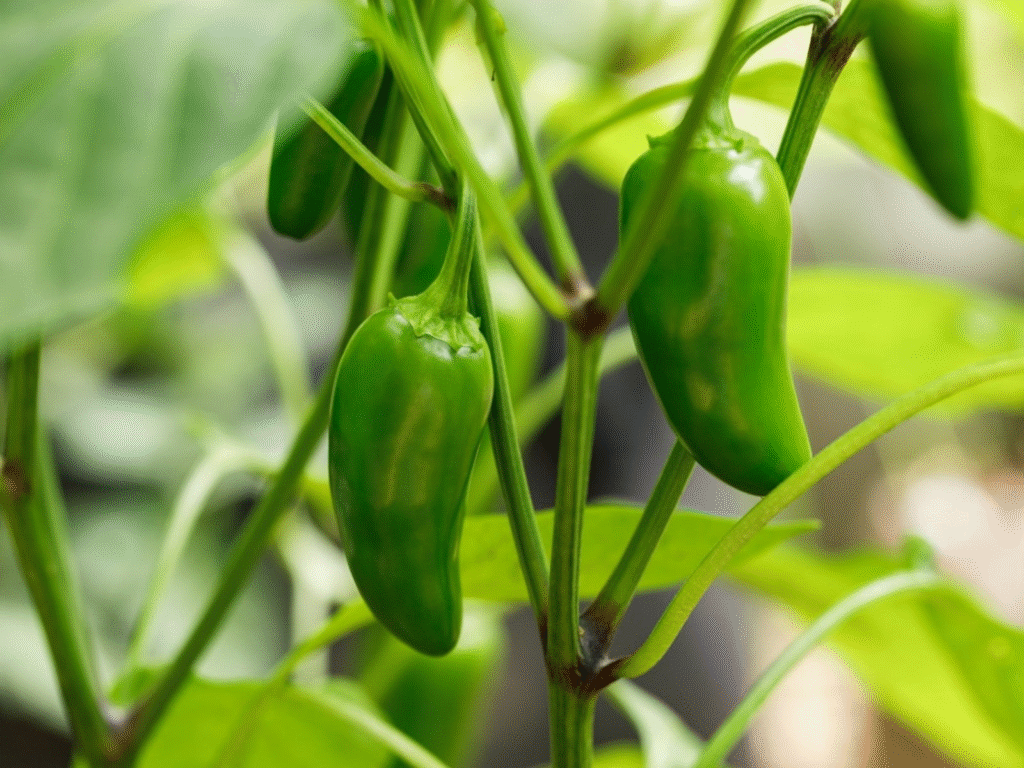
When to Harvest
You can harvest jalapeños at different stages:
- Green: 70-90 days after transplanting, when peppers are firm and glossy
- Red: Allow peppers to ripen fully on the plant for sweeter, hotter flavor
Proper Harvesting Technique
- Use sharp scissors or pruning shears
- Cut the stem about ¼ inch above the pepper
- Handle with care to avoid damaging the plant
- Wear gloves to protect skin from capsaicin
Storage Options
| Storage Method | Preparation | Duration | Best For |
|---|---|---|---|
| Refrigerator | Unwashed, in paper bag | 1-2 weeks | Fresh use |
| Freezing | Whole or sliced | 6-12 months | Cooking |
| Drying | Whole or halved | 1+ year | Powder, flakes |
| Pickling | Sliced or whole | 3-6 months | Sandwiches, nachos |
| Fermenting | Chopped or whole | 2-3 months | Hot sauce |
Using Your Homegrown Jalapeños
Culinary Applications
Jalapeños are incredibly versatile in the kitchen:
- Fresh: Dice for salsas, slice for sandwiches, stuff for appetizers
- Roasted: Enhances flavor for sauces and dips
- Pickled: Perfect for nachos, tacos, and sandwiches
- Smoked: Creates chipotle peppers for authentic Mexican dishes
- Infused: Add to oils, vinegars, and spirits for flavored condiments and beverages
Health Benefits
According to the USDA FoodData Central, jalapeños offer impressive nutritional benefits:
- Rich in vitamins A and C
- Good source of potassium and dietary fiber
- Contain capsaicin, which may boost metabolism and reduce inflammation
- Low in calories (about 4 calories per pepper)
Saving Seeds for Next Season
Extend your jalapeño growing journey by saving seeds:
- Select fully ripe (red) peppers from healthy plants
- Cut open and scrape seeds onto a paper towel
- Allow to dry completely for 1-2 weeks
- Store in paper envelopes in a cool, dry place
- Label with variety and date
- Seeds remain viable for 2-3 years when properly stored
Troubleshooting Common Issues

Plant Problems and Solutions
- Few or no peppers: Likely pollination issues. Increase air circulation or hand-pollinate
- Falling blossoms: Usually caused by temperature extremes or irregular watering
- Stunted growth: Check for nutrient deficiencies or root-bound containers
- Curling leaves: Often indicates pest pressure or environmental stress
- Black spots on fruit: May be blossom end rot; ensure consistent watering and adequate calcium
Conclusion: Enjoying the Fruits of Your Labor
Growing jalapeños can be a satisfying addition to your gardening repertoire. With proper care, a single plant can produce 30-40 peppers throughout the growing season. Whether you’re cultivating them in a spacious garden, on a sunny patio, or in a bright indoor spot, these versatile peppers reward your efforts with abundant harvests and endless culinary possibilities.
Remember that jalapeño heat levels can vary based on growing conditions, with water stress often increasing capsaicin levels and heat. Experiment with different growing methods to discover what works best in your unique environment and produces the flavor profile you prefer.
